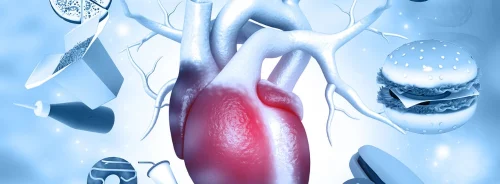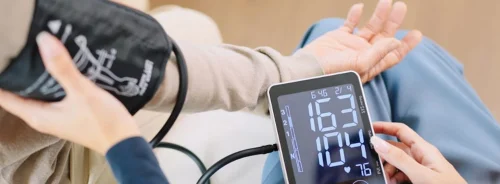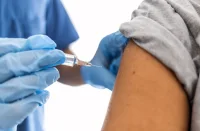Coronary artery disease (CAD) is the leading cause of death among women worldwide, yet its diagnosis and management continue to present significant challenges. Women frequently experience atypical symptoms and are underrepresented in cardiovascular research, resulting in diagnostic delays and less effective treatment strategies. Traditional risk prediction tools often fail to address the unique presentation of CAD in women, necessitating gender-specific models. The Coronary Risk Score in Women (CORSWO) addresses this gap by providing a stratified risk assessment for major adverse coronary events (MACE) using clinical, stress test and imaging data. A recent study published in Radiology: Cardiothoracic Imaging explores the development, structure and clinical implications of the CORSWO model, which represents a significant step towards personalised cardiovascular care for women.
The Unique Presentation of Coronary Disease in Women
CAD manifests differently in women compared to men, both in terms of onset and symptoms. Women typically develop CAD seven to ten years later than men and often experience myocardial infarction (MI) without chest pain, leading to delays in diagnosis and treatment. These atypical presentations, such as fatigue or shortness of breath, contribute to higher mortality rates among younger women. Additionally, conditions such as microvascular dysfunction, vasospastic disorders and spontaneous coronary artery dissection are more prevalent in women, further complicating diagnosis.
Compounding these challenges is the increasing impact of traditional risk factors, including diabetes, hypertension, dyslipidaemia, smoking and obesity. Diabetes, in particular, has a disproportionate effect on women, significantly elevating their risk of CAD and mortality after MI. Despite this, women remain underrepresented in cardiovascular studies, resulting in a lack of gender-specific data to guide risk assessment and treatment strategies. Therefore, the development of tools like CORSWO is critical in addressing these disparities, offering a structured approach to predict MACE by incorporating variables tailored to women’s unique risk profiles.
The Development and Structure of the CORSWO Model
The CORSWO model was created to address the limitations of traditional risk stratification tools. It was developed from a large cohort of 2,226 women who underwent gated SPECT myocardial perfusion imaging (gSPECT MPI), a non-invasive imaging modality used to assess myocardial perfusion. The study cohort was divided into training and validation groups to ensure the model's reliability and applicability across populations.
CORSWO combines eight predictive variables that collectively provide a comprehensive coronary risk assessment. These variables include age over 69, diabetes, pharmacological stress, ST-segment depression, myocardial necrosis, myocardial perfusion stress, myocardial ischaemia, and an end-systolic volume index greater than 15 mL. Each variable was selected based on its independent association with MACE and its prognostic significance. Women are stratified into four risk categories: low, moderate, high, and very high, with corresponding hazard ratios.
The model's performance is robust, as evidenced by its area under the receiver operating characteristic curve (AUC) of 0.79. This demonstrates excellent predictive capability for identifying women at risk of MACE over a mean follow-up period of four years. Importantly, CORSWO outperforms many existing models by combining clinical data with imaging findings, addressing the limitations of traditional approaches that rely solely on clinical variables.
Clinical Implications and Future Applications
The integration of CORSWO into clinical practice has transformative potential for the management of coronary disease in women. By accurately stratifying risk, it enables clinicians to personalise treatment plans, focusing on early intervention for those at high or very high risk. This may include lifestyle modifications, targeted pharmacologic therapy or more frequent monitoring. Furthermore, incorporating stress tests and imaging variables enhances diagnostic precision, reducing the likelihood of false positives common in traditional stress tests for women.
CORSWO also underscores the importance of noninvasive imaging in cardiovascular care. Techniques such as gSPECT MPI provide valuable insights into myocardial perfusion and ischaemia, complementing traditional exercise tests. These imaging techniques are particularly crucial for women, who often present with atypical or ambiguous symptoms. The model’s emphasis on combining clinical and imaging data reflects a more holistic approach to cardiovascular risk assessment, which is essential for improving outcomes in this population.
Beyond individual patient care, CORSWO has implications for research and public health. Its development highlights the urgent need for greater representation of women in cardiovascular studies, ensuring that future models and treatments are informed by gender-specific data. Its stratified risk categories also provide a framework for population-level interventions, guiding resource allocation and public health strategies to reduce the burden of CAD in women.
Looking ahead, further research is needed to validate CORSWO in diverse populations and healthcare settings. Studies comparing CORSWO with other established risk prediction tools, such as the Framingham Risk Score or the European SCORE model, will be essential to establish its relative efficacy. Additionally, incorporating emerging imaging modalities and biomarkers into the model may enhance its predictive accuracy and clinical utility. Future iterations of CORSWO could also explore the influence of psychosocial factors, such as stress and depression, which are known to affect cardiovascular outcomes in women disproportionately.
The CORSWO model represents a significant advancement in predicting and managing coronary risk in women. By integrating clinical, stress test and imaging variables, it provides a robust and personalised tool for stratifying risk and guiding treatment decisions. Its development addresses long-standing gaps in cardiovascular research and care, offering a gender-specific approach to a leading cause of mortality in women. Adopting tools like CORSWO will ensure equitable and effective cardiovascular care for all patients. Future research and validation efforts will further cement its role in advancing women’s cardiovascular health, ultimately reducing the burden of CAD globally.
Source: Radiology: Cardiothoracic Imaging
Image Credit: iStock







